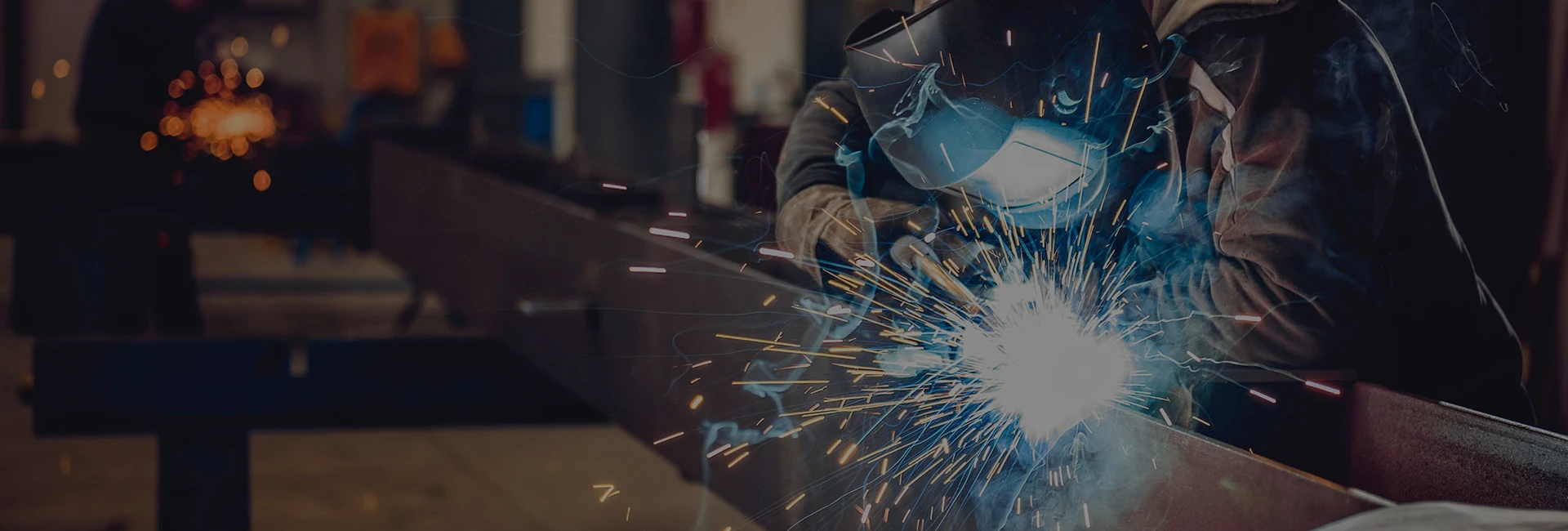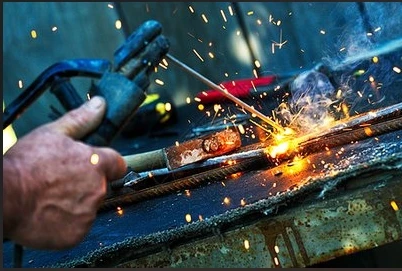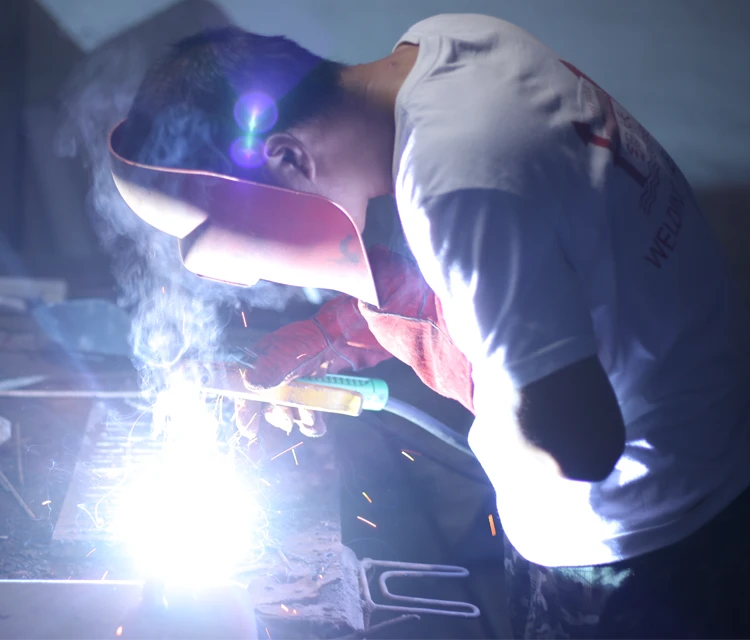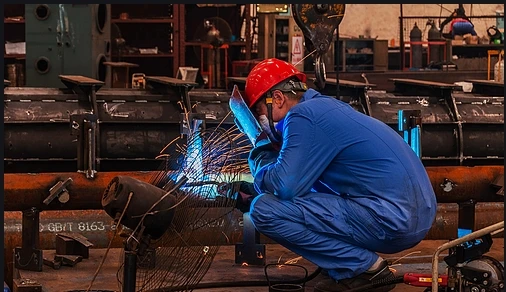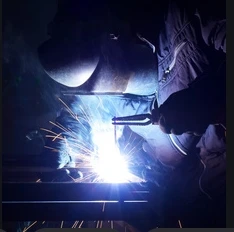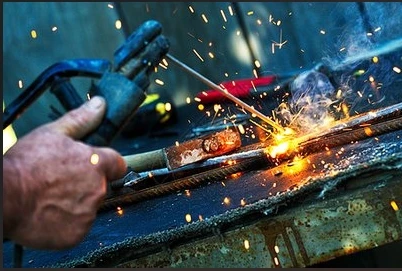Material Science Innovations Behind E309 Development
8月 . 29, 2025 15:24
In the demanding world of industrial fabrication and construction, the quality and performance of welding consumables are paramount. Behind every robust weld lies sophisticated material science, meticulously engineered to meet specific challenges. Dingzhou Jinlong Metal Production Co., Ltd., a prominent force in China's welding materials sector located in the industrial zone of Dingzhou city, Hebei province, exemplifies this commitment to innovation. Operating a state-of-the-art production line with an impressive annual output of 50,000 tons, Jinlong leverages advanced technology to produce a diverse portfolio, including mild steel electrodes, carbon dioxide welding wire, welding blend powder, and crucially, specialized stainless steel electrodes like the e309 そして e347 16 variants. Their self-owned "Copper Bridge" brand has earned international recognition, exported widely to Southeast Asia, the Middle East, South America, and Africa, built on a foundation of consistent quality characterized by arc stability, minimal spatter, uniform slag coverage, excellent weld bead appearance, and superior mechanical properties including strength, plasticity, toughness, and porosity resistance.
The development of high-performance stainless steel welding electrodes, particularly the e309 そして e347 16 welding rod types, represents a significant achievement in metallurgical engineering. These products are not merely commodities but solutions tailored for complex joining scenarios, demanding a deep understanding of alloy chemistry, phase transformations, and solidification behavior. Jinlong's investment in advanced production and comprehensive testing equipment ensures these sophisticated materials are produced reliably at scale, meeting the stringent requirements of global heavy industry.
Material Science Foundations of the e309 Welding Electrode
The core innovation driving the e309 electrode lies in its meticulously balanced alloy composition. Unlike standard austenitic stainless steel fillers like E308/308L, the weld metal deposited by E309/309L contains significantly higher levels of chromium (Cr) and nickel (Ni). This elevated Cr and Ni content serves a critical purpose: it dilutes the base metal composition when joining dissimilar metals. The primary application driving e309 development is the welding of stainless steel to carbon steel or low-alloy steel, a common requirement in pressure vessels, heat exchangers, structural components, and processing equipment. However, joining such dissimilar materials poses a major risk: hot cracking.
Hot cracking occurs during the final stages of weld metal solidification when thin liquid films remain between growing dendrites, susceptible to tearing under thermal contraction stresses. The key material science breakthrough in e309 is the intentional introduction of a controlled amount of ferrite into its predominantly austenitic microstructure. This ferrite phase, carefully calibrated through the Cr/Ni equivalent ratio (using formulas like the Schaeffler or DeLong diagram), acts as a "sponge" for harmful impurities like sulfur and phosphorus that tend to segregate to liquid films. More importantly, ferrite provides a high-angle grain boundary that disrupts the continuous, crack-susceptible austenitic grain structure. The result is a weld deposit with excellent resistance to hot cracking, essential for the integrity of dissimilar welds. Furthermore, the high Cr content enhances oxidation and corrosion resistance at elevated temperatures, making e309 suitable for joining heat-resistant alloys or components subjected to thermal cycling. Base metals commonly joined using e309 include various grades of stainless steel (plate, strip, tube, heat transfer tube, pressure vessel steel), carbon steel, alloy steels with poor weldability, and castings/forgings.
Engineering the e347 16 Welding Rod for Stabilized Performance
While e309 addresses dissimilar metal joining, the e347 16 welding rod tackles a different challenge specific to certain austenitic stainless steels: intergranular corrosion (IGC). This form of corrosion attacks grain boundaries, severely weakening the material. It occurs when chromium carbides (Cr23C6) precipitate along grain boundaries in the heat-affected zone (HAZ) during welding or high-temperature service. This precipitation depletes chromium in the adjacent areas, making them susceptible to corrosion.
The material science innovation behind the e347 16 welding rod is the strategic addition of stabilizing elements, primarily niobium (Nb) and/or tantalum (Ta). These elements have a stronger affinity for carbon than chromium. By adding sufficient quantities of these stabilizers (indicated by the "16" suffix, often aligning with specifications like AWS A5.4 E347-16), the carbon in the weld metal preferentially combines with niobium/tantalum to form stable carbides (NbC/TaC). This effectively "stabilizes" the carbon, preventing it from forming chromium carbides during the critical temperature range where sensitization occurs (approximately 425-870°C). Consequently, chromium remains in solid solution throughout the microstructure, maintaining a uniform high chromium content at the grain boundaries and providing excellent resistance to intergranular corrosion.
の e347 16 designation also indicates usability in all welding positions (the "16" often signifies a lime-titania or basic coating suitable for AC or DC+ polarity). Jinlong's production ensures consistent coating quality, providing good arc characteristics, easy slag removal, and smooth weld bead appearance – essential for productivity and quality in demanding applications like chemical processing equipment, pharmaceuticals, and food processing where stabilized grades like 321 or 347 are used.
Diverse Solutions: Jinlong's Commitment to E347 16 Welding Rod Quality and Range
Dingzhou Jinlong Metal Production Co., Ltd.'s strength lies not only in specialized products like e309 そして e347 16 welding rod but also in its comprehensive range of high-quality, high-volume welding consumables catering to diverse industrial needs. Their powerful manufacturing infrastructure supports large-scale production while maintaining stringent quality control, ensuring reliability for major construction, shipbuilding, pipeline, and manufacturing projects worldwide. The "Copper Bridge" brand encompasses a wide spectrum of electrodes, each engineered for specific applications:
|
Types Of Electrodes |
Introduction |
用途 |
|
Model: CB-J421 |
GB: E4313 AWS: E6013 It is a carbon steel electrode with titania type coating. AC/DC. All position welding. Excellent welding performance, easy reignition, stable arc, beautiful weld bead. |
For welding low carbon steel structures, especially suitable for welding thin plates and cosmetic welding requiring beautiful, glossy weld beads. |
|
Model: CB-J425 |
GB: E4311 AWS: E6011 It is a carbon steel electrode with cellulose potassium type coating. AC/DC. Excellent welding performance, beautiful appearance after vertical downward welding, fewer slags, high efficiency. |
Suitable for butt, fillet, and lap welding on thin plates in low carbon steel structures (e.g., power station flues, air ducts, transformer oil tanks, hulls, car exterior panels). |
|
Model: CB-J508 |
GB: E5018 AWS: E7018 It is a carbon steel electrode with low hydrogen type coating. AC/DC. Excellent welding performance, easy reignition, stable arc, beautiful weld bead. |
Used for welding carbon steel and low alloy steel structures (e.g., 16Mn). Offers superior crack resistance, especially on thicker sections or high-strength steels. |
よくある質問 about E347 16 Welding Rod
What is the primary application of the e309 welding electrode?
の e309 electrode is primarily designed for dissimilar metal welding, especially joining mild steel or low-alloy steel to stainless steel. Its higher chromium and nickel content, along with a controlled ferrite microstructure, provides excellent resistance to hot cracking in these challenging applications, commonly found in pressure vessels, heat exchangers, and structural components involving mixed materials.
How does the e347 16 welding rod prevent intergranular corrosion?
の e347 16 welding rod contains stabilizing elements like niobium or tantalum. These elements preferentially combine with carbon to form stable carbides, preventing chromium depletion at grain boundaries by stopping the formation of chromium carbides. This ensures the weld metal retains its corrosion resistance, making it ideal for welding stabilized austenitic stainless steels (e.g., Types 321, 347) used in corrosive environments.
When should I choose an e347 16 welding rod over a standard 308/308L type?
Choose the e347 16 welding rod when welding base metals stabilized with titanium or niobium (like Type 321 or 347 stainless steel) or when the welded component will be exposed to temperatures in the sensitization range (425-870°C) during service. The stabilizers in e347 16 are crucial for preventing intergranular corrosion in these scenarios, which a standard E308/308L electrode cannot reliably do.
Can the e309 electrode be used for joining stainless steel to itself?
While e309 is primarily optimized for dissimilar welding, it can be used for joining certain types of stainless steel, particularly those with higher carbon content or where higher alloy filler metal is acceptable. However, for joining standard austenitic stainless steels like 304/304L to themselves, E308/308L is usually more appropriate and economical. e309 is best reserved for its primary purpose: joining stainless to carbon or low-alloy steels, or for overlaying.
What does the "16" signify in e347 16 welding rod?
The "16" in e347 16 welding rod primarily indicates the type of coating and usability. It typically signifies a lime-based (basic) coating suitable for use with both AC (Alternating Current) and DC electrode positive (DCEP) polarity. More importantly, coatings designated "XX16" are generally formulated for all-position welding, providing good slag coverage and arc stability overhead and vertically.
The development of high-performance welding electrodes like e309 そして e347 16 is a testament to the critical role of advanced material science in modern industry. Dingzhou Jinlong Metal Production Co., Ltd. leverages its substantial manufacturing capabilities, advanced technology, and rigorous quality control to translate these material innovations into reliable, large-scale production. The e309 electrode, with its optimized high Cr/Ni content and ferrite-austenite microstructure, solves the critical problem of hot cracking in dissimilar metal joints. Conversely, the e347 16 welding rod incorporates stabilizing elements to prevent intergranular corrosion, safeguarding welds in stabilized stainless steels exposed to sensitizing temperatures. Alongside these specialized products, Jinlong's extensive range, including the proven CB-J421, CB-J425, and CB-J508 electrodes, ensures comprehensive solutions for carbon and low-alloy steel welding. Through continuous innovation and a commitment to quality embodied by the "Copper Bridge" brand exported globally, Jinlong provides the essential materials that underpin the strength and durability of infrastructure and machinery worldwide. Their focus on the material science fundamentals ensures their products deliver consistent, high-performance results in the most demanding applications.



